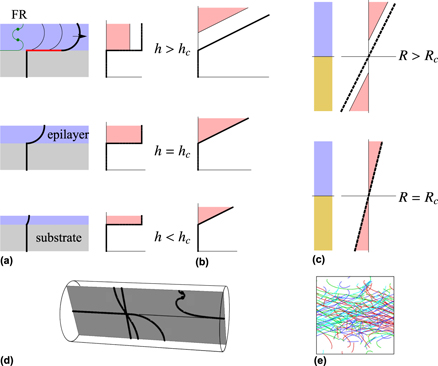Article contents
The size effect in the mechanical strength of semiconductors and metals: Strain relaxation by dislocation-mediated plastic deformation
Published online by Cambridge University Press: 11 August 2017
Abstract

The Ph.D. work of Jan H. van der Merwe in 1949 established a new paradigm for the understanding of dislocation dynamics in restricted volumes. This led to a comprehensive understanding of plasticity, or strain relaxation, in the context of strained-layer semiconductor structures. However, this understanding was largely overlooked in the context of traditional metallurgy and micromechanics. We identify four reasons for this, the apparent need for an unstrained substrate in van der Merwe’s theory, the supposed inapplicability to strain gradients, the supposed inapplicability to the Hall–Petch effect (dependence of strength on the inverse square root of grain size), and an emphasis on understanding strain hardening rather than the yield point. Addressing these four points in particular, here it is shown how the insights of van der Merwe and of the earlier work by Lawrence Bragg lead to a coherent and unified view of the size-effect phenomena ranging from the Hall–Petch effect to the strain-gradient plasticity theory.
- Type
- Invited Reviews
- Information
- Journal of Materials Research , Volume 32 , Issue 21: Focus Issue: Jan van der Merwe: Epitaxy and the Computer Age , 14 November 2017 , pp. 4041 - 4053
- Copyright
- Copyright © Materials Research Society 2017
Footnotes
Contributing Editor: Artur Braun
This section of Journal of Materials Research is reserved for papers that are reviews of literature in a given area.
References
REFERENCES
- 5
- Cited by



